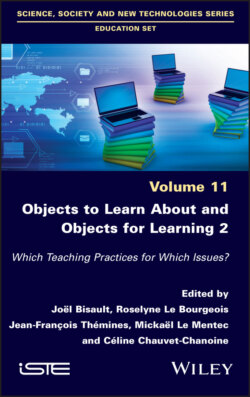Читать книгу Objects to Learn about and Objects for Learning 2 - Группа авторов - Страница 20
1.2. Points of reference: A special place in geography as it is taught
ОглавлениеIn France, school geography curricula are intended to reserve a specific place for the question of spatial points of reference. Learning about them is a non-negligible part of the process, generally under the label of “geographical points of reference.” What can we read behind this phrase, which seems all-encompassing?
The term “point of reference” is encountered in geographical dictionaries, where it signifies “a mark or a signal indicating a location or a place” (Brunet et al. 2005). The authors specify that this has three uses: the point of reference serves “to (1) situate or locate oneself in space, (2) as a basis for evaluating distance and (3) to indicate a risk or a danger” (Brunet et al. 2005). Other geographers have discussed the topic, adding that “the point of reference” can be understood vaguely as “using the identifiable elements of the landscape” or more precisely as “using a system of reference coordinates (orthonormal reference axes)” (Bavoux and Chapelon 2014). What lies behind this entry is one of the discipline’s biggest problems: that localization is determined both as “a position in space [and as] a point of reference for that position (and a process for moving to a particular location)” (Bavoux and Chapelon 2014).
For a long time, the prerogative of geography in its classic period (first half of the 20th century) entailed that the study of locations in the form of inventories was also central to geography as it was taught, where a dominant weight was accorded to the observable forms, to the learning of a nomenclature, whether a nomenclature of these forms or of proper names…” (Audigier and Tutiaux-Guillon 2004). While teaching in the discipline today has been heavily modernized (with the presence of a dynamic, albeit fragmented, didactics and an introduction of content with a better connection to the epistemology of the science of reference), we note that “these old forms of school geography persist in mainstream geography” (Chevalier 1997), such as the recent publication of work that exhumes old maps1 or Internet games that are among the top results in Internet searches2.
What remains clear, in the framework of a prescribed, revitalized school geography, heretofore focused on reasoning and problem solving, dialoging with other disciplines, and integrating representations and the digital, is that learning points of reference in space remains a strong component of the discipline as it is taught, and that we approach it from the perspective of objectives or competencies (Mérenne-Schoumaker 2012). Sometimes taken to be an “ideal-type of transmission of a self-centered vision of the world”, among other things “by filling the function of common culture destined for disadvantaged pupils” (Thémines 2004), the question of the geographical points of reference to be studied resonates more sharply in the framework of what we were interested in here, elementary school teaching, where teachers, who are generalists, are only suited for the discipline’s “surface elements” (Philippot 2008) because of their “imperfect polyvalence” (Philippot and Baillat 2011) and who consider this mastery of points of reference as an indispensable prerequisite for other forms of teaching, sometimes even beyond what is called for (Leroux and Le Bourgeois 2020).
If this need to present points of reference as an essential foundation sends school teachers back to the geographic education they received as pupils or to mainstream geography, another explanation lies in the fact that the study of locations and points of reference can be easily evaluated, which can lead to it being considered as a “low stress intellectual operation” (Mousseau and Pouettre 1999), which results in “factual errors” (Hugonie 2002). A glance at the forums and blogs of elementary school teachers shows real resource-sharing in terms of teaching resources suggested by teachers that seem legitimate because of their knowledge as “practitioners” and because users indicate satisfaction with them (Baudinault 2017). Assessments on points of reference are included, but the gap between prescribed geography and geography as it is practiced inevitably exists. In a study conducted by the DEPP, in the framework of the CEDRE (Cycle of Disciplinary Evaluations Conducted by Sample) in 2011, almost 75% of the elementary school teachers in the fields of history and geography who responded rejected the assertion that their assessments consisted of “reciting a lesson”, even though 85% of them recommended “memorization of the lesson” (SCEREN CNDP-CRDP 2011)!
